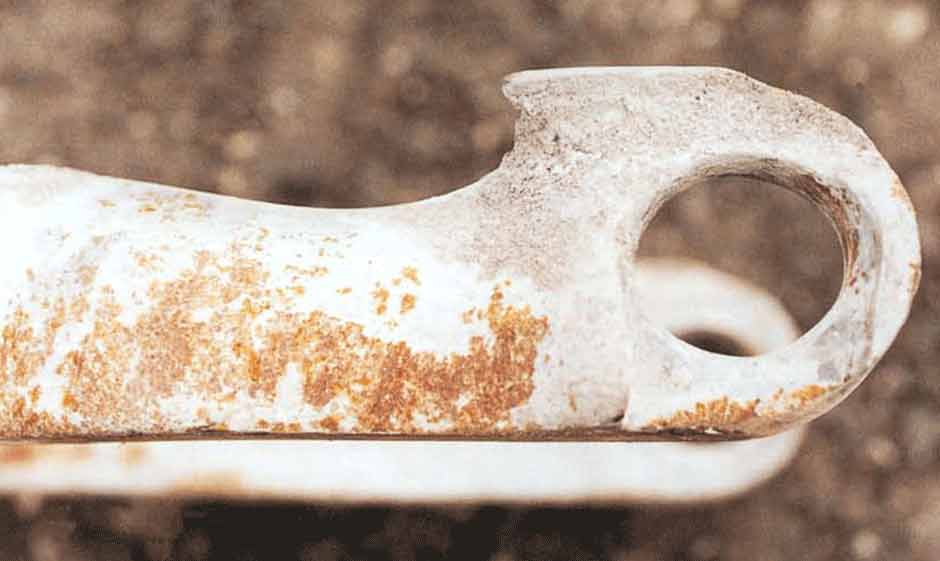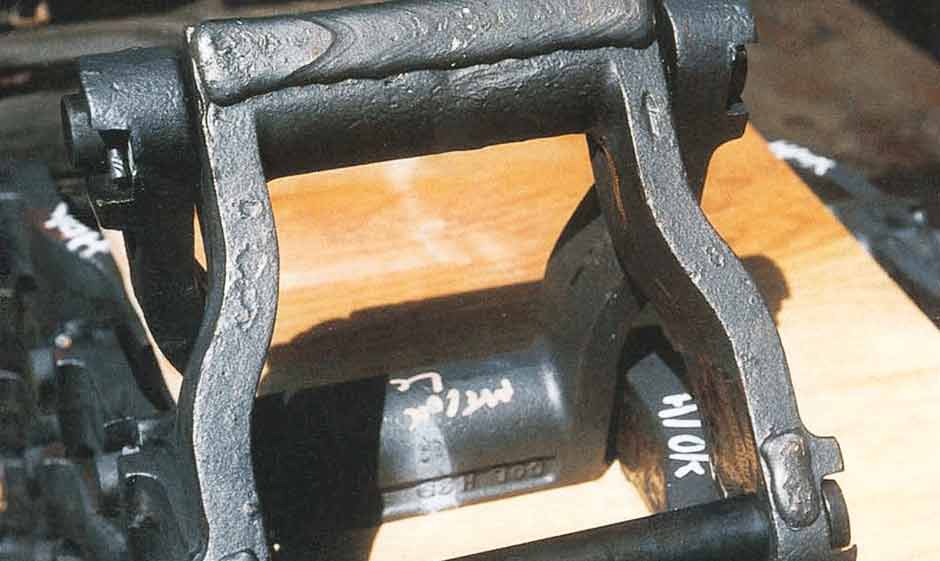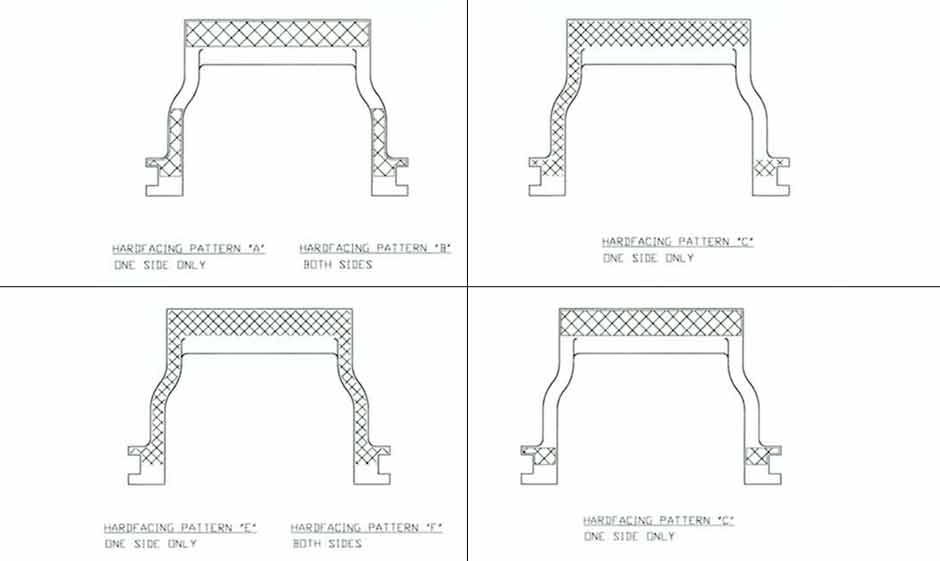WHITE PAPER
Clinker drag chain: often ignored, but easily improved.
— By Steve Marsac, Columbia Steel Product Development Manager
Introduction
Conveying cement clinker from clinker coolers to clinker storage to finish grind ing mills is part of the cement making process that all cement plants have to do. When the clinker is cool, conveying is a simpler process; conveying belts can be used. But when the clinker is hot, the methods for conveying become more limited, typically done with drag chain and in some cases screw conveyors. This article will focus on clinker drag chain and how it is fairly simple to make improvements in the service life and reliability of this important but often ignored piece of cement plant equipment.
A low priority?
Clinker drag chain usually does not appear at the top of the list for potential cost savings for any maintenance supervisor. A strand of drag chain will typically last from one year to up to ten years depending primarily on its service conditions. And a strand of drag chain does not cost a lot of money compared to other equipment throughout the plant, so the annual cost for drag chain is not typically very attention grabbing. Another feature of drag chain that contributes to its being ignored is its reliability. Breakage during normal operation is not very common. Most drag chain is over-designed with respect to cross section in the highest tension stress areas and it is easy to visually inspect the drag chain links for wear and replace it before It becomes dose to breaking.
However, cement plants that do ignore pursuing any improvements to their strands of clinker drag are missing out on some obvious and easy-to-implement cost savings. One of the simplest ways to improve the service life of the drag chain is to inspect the reasons for removal from service. This is where your supplier should be very involved. Every time a strand of drag chain is removed from service, a few typical worn sample links and link pins should be returned to the supplier so they can inspect the wear pattern and perform a material analysis. The inspection of the worn samples will lead to recommendations of material section modifications and/or hardfacing overlay applications. Basically, put more material where needed or more abrasion resistant overlay to increase the service life of the drag chain. The material analysis and microscopic inspection will inform the metallurgist and engineer how the material of the drag chain reacted in the service conditions.
Most clinker drag chains are conveying hot clinker. The most common service condition is conveying fines from under the clinker cooler and then being fed with the discharge from the clinker breaker as it drags the clinker on to another conveyor, often another strand of drag chain. The drag chain is exposed to heat. How much heat varies from strand to strand. The metallurgical analysis will tell if the drag chain alloy softened due to heat exposure, became brittle, or was not affected by the heat. This type of metallurgical analysis is important to determine which alloy is best suited for that specific strand of drag chain.
Spectrometer analysis leads to improvements
The following is an example of how the material analysis of a worn sample drag chain link led the implementation of a new alloy being selected for the cast drag chain. The worn sample was determined by spectrometer chemical analysis to be manganese steel. Microscopic visual examination showed the microstructure consisted of coarse columnar grains of austenite, which is typical for manganese steel. The microscopic examination also showed a lack of any secondary carbide precipitation, which suggests the drag chain did not become greater than 600 degrees F in service.
For most drag chain strands, drag chain alloy selection is very important to maximize service life. Manganese steel, heat resistant steels, and high strength alloy steels all read differently at various temperature ranges. The supplier of the drag chain will know the properties of the steel before the drag chain was exposed to the service conditions. Comparing the properties of the steel before and after exposure to the service conditions can determine what the service temperature is and provide valuable information for selecting the appropriate steel alloy.
A good drag chain supplier will request the cement plant to provide a partially worn drag chain link and pin for inspection before the strand is removed from service. This practice will allow the supplier and customer to implement design improvements before the next drag chain strand is manufactured. The result should be that each new strand of drag chain exceeds the previous strand in service life. This process of making continuous design enhancements based on wear study and material analysis is simple and should be expected from your drag chain supplier. A change in the hardfacing pattern applied to the drag chain could double the life of the drag chain strand.
Better reliability means better value
Most strands of clinker drag chain can be improved to make them have longer service life and have less annual cost. Each strand should be analyzed individually for alloy, physical design, and hardfacing overlay pattern. There is a lot of room for improvement in cement clinker drag chain and working with a responsive and capable supplier is the key to maximizing the cost effectiveness and reliability of your drag chain strands.


